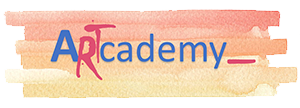

Bags from Rugs
-Since the middle ages people used the weaver to make clothes for the household. They used old clothes and textiles that were worn out to make rugs for household use. Then those rugs could also be used to make heavy duty bags to be used in the household use.
The bags from rugs started becoming pieces of art since they had patterns and designs that made them unique in each area and in local fairs and expositions they started selling them as items to be used and displayed as well.
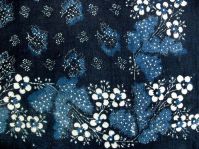
Blueprint manufacture
The history of origin in Slovakia dates back to the 18th century, especially in areas around Orava and Spiš, where the cloth was used and the main production material was canvas.
Blueprint has become an important part of the folk clothing. The fabric used, did not have to be wash frequently and it was not costly, because the print on it was cheap.
The blueprint dyeing technique was applied mainly to the canvas, but other substances were used later, e.g. cotton. The patterns on the fabric were hand painted, but later a wooden or metal stamp was used.
Firstly, the canvas was boiled in water, where calcium hydroxide and soda were added. Later, the cloth was washed in sulfuric acid diluted with water and rinsed in running water. After drying, starching and calendaring, the canvas was ready to print patterns and for colouring. A cover blend, called pap, was used for suppressing, which was applied to the blueprint form. The mentioned form was soaked in a container of pap and then applied to the canvas. After the cover blend had dried, the canvas in parallel folds was hung on an iron structure and immersed for 20-30 minutes into a cold colouring mixture. The basic component in it was indigo. The whole canvas was colored, except for the places where pap was put, which indigo did not accept. The soaking process was repeated several times, because then the colour was darker. After staining, the fabric was placed in a weak sulfuric acid solution to remove the pap and a white pattern formed on a dark blue background.
The use of blueprints was versatile, for example sewing skirts, making blankets, bedding, scarves, aprons, tablecloths, curtains and many more.

Bruges, Belgium - Art of Lace Making
The video shows the ancient and precious art of lace making in Belgium, especially in the Flanders.
The origins of the art are dated back to the Renaissance but hundreds of craftswomen still work in Bruges nowadays. It is a very precise and slow process that requires hundreds of pins and a lot of patience.
Today, Belgian lace is sold as a souvenir, but its quality remains that of the time.
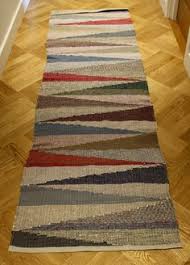
Carpet from rugs
Since the middle ages people used the weaver to make clothes for the household. They used old clothes and textiles that were worn out to make rugs for household use. The clothes were torn into stripes and then weaven together to form a robust form of rug. It was easy to use transfer and wash and was very usuful in everyday life.
The rugs started becoming pieces of art since they had patterns and designs that made them unique in each area and in local fairs and expositions they started selling them as items to be used and displayed as well.
The methodology with the weaver is used up to date and Cyprus handicraft organisation is organising classes so the rug carpets can be produced.
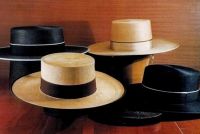
Cordovan hat crafting
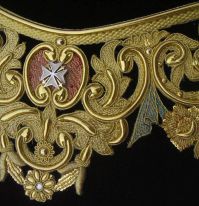
Embroidery in gold
Gold embroidery is a type of embroidery that uses gold threads (or to a
lesser extent, silver), and it is usually done on cloth, velvet or
silk.
On a taffeta lined with strong canvas the pattern is drawn. The fabric
to be embroidered is woven and the entire surface of the pattern is covered
with gold or thick silver thread, passed and secured by the two ends. To
embroid in this way, the artisan needs to make fillings to enhance them by
using yellow gold card or twist threads of the same color.
The main characteristic of this kind of embroidery is that it never crosses the fabric, remaining spread on its surface with small stitches of yellow cotton threads, previously waxed to lend it hardness.
Because of the Crusades in the thirteenth century, shields and other cavalry motifs began to be embroidered. Other embroidery in gold in other religious ornaments, such as chasubles and mantles, comes to be applied since the seventeenth century. This art decreased notably at the end of the eighteenth century, being largely replaced by sewing machine in the nineteenth century.

Embroiling clothes
The traditional laces from the Fiti village were used to decorate womens clothes. The Fitiotiko Lace that was the traditional type of embroiling in the area was decorating the whole costume of women from rural areas. The whole costume was a piece of long hours of work from female family members to be completed and the young girls of the villages were in competition conserning the art of the particular garments. Nowadays it is part of the traditional uniforms of Cyprus.

Fitiotiko lace
Fitiotiko Lace is a piece of fabric weaved by hand and embroider by hand. Its original use was for decoration purposes. It is completely handmade and the patterns used are very characteristic of the specific area of Paphos. The textile is used to decorate the houses and to decorate clothing.
All traditional uniforms from Paphos area have Fitiotiko lace as decoration.
The method used to embroider survived to day and is thought at special classes from Cyprus handicraft organisation. The area where the lace originates has a museum dedicated to the patterns of the lace and the history.

Koniakow Crocheted Lace
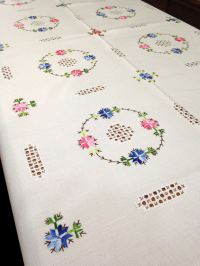
Lagartera's hand embroidery
The embroideries are embossed work done with needle on already made fabrics. The labranderas or seamstresses work and embroider by hand fabrics as a homemade canvas, made in manual looms with linen fiber. The fraying strips are rectangular, finished off at the edges with the bridal stitch.
The steps of the process of classical Lagartera craftsmanship range from the fraying of the fabric, making warps, cutting and pulling out threads, sowing or basting, making the "cuajado" to prevent the threads from unraveling and finally making the piece a hem or hem on all four sides, topped by a hem, also called "repulgo" in Lagartera. The thread was usually wool or yarn in natural color and then dyed, but silk was also widely used, especially to embroider the ribbons of the chevrons that make up the feminine clothing.
Materials: fabric made of linen, cotton, canvas or terylene. Mouliné threads, and fine pearls or reels.
It is known the existence of a workshop of labranderas property of Catalina Fernández Lozano in the neighborhood Lagarterano de Toledillo in the sixteenth century.
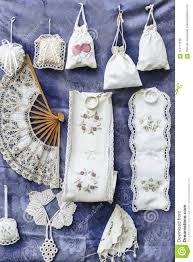
Lefkara Lace bag
Lefkara laces were used to decorate bags. The initial everyday ladies bag started becoming a form of art and the competition among the young girls of the area helped the particular products to become fine pieces of art and porular in the whole island.
The bagsstarted becoming fashionable since they had patterns and designs that made them unique and they are sold throughout Cyprus.

Loom weaving technique

Manufacturing of Cantù Lace
Cantù lace is candidate to be included in the UNESCO Representative List of the Cultural Heritage. The video shows the great art and technique behind the realization of the doily lace, using the typical linstrument called “bobbin lace”. The artisans realize different motif to decorate textiles, interlacing the threads one at a time.
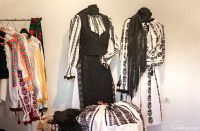
Romanian blouse (ia) handmade sewing technique
Romanian folk blouse is part of the Romanian traditional costume from ancient times and its roots originate in the port of the Thracians and Geto-Dacian.
Ia is a component of the Romanian folk costume, wich varies from one region to another, by the embroidery pattern, the colors used as well as the ornaments used, sequins or beads.
In first video is presented how to make the famous traditional Romanian blouse (ia). The blouse can be made of flax, hemp, wool or cotton.
The sleeves, chest and neck are the most decorated with embroidery.
For ia, it requires a lot of technical knowledge: how to make the cut, the points used in ornamentation and how to make them, the materials needed for making the ia.
The materials used are: white cotton cloth, colored and white threads, scissors for cutting, sewing needles, tailoring meter, cutting table.

Sustainable craft with centenary looms from Granada´s Alpujarra
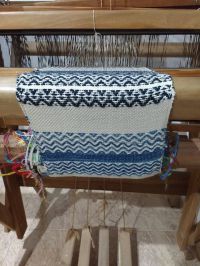
The sound of the loom
The sound of her Arab loom fills the air of the workshop of Isabel Soler, one of the few weavers left in Níjar, a town in the province of Almería. She comes from a family of weavers and assures that the sounds of looms captivated her. She weaves blankets and carpets which have reached to homes in the United States or Germany. She takes care of dying the wool she uses with the plants she harvests.

The tradition of Sardinian carpet in the clothing lab of Prof. Cannas di Addis
The video shows the great ability of Sardinian artisans, making handmade carpets with wool, especially from sheep, cotton or linen.
The weaving is done on the traditional manual loom using different techniques and patterns: from geometrical patterns to the flowers ones.
Just as in the past, the carpets are made of sheep's wool and dyed with plant products such as flowers, bark, roots and leaves of the local vegetation.
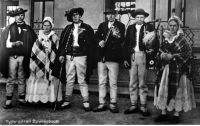
Traditional highlanders' costume from Beskid Zywiecki
Pictures and the description refer to the traditional highlander costume from Zywiec. It was worn by the inhabitants of the Beskid Wysoki, Beskid Maly and in the Skawa and Sola Valleys. Traditional costumes were no longer worn as at the end of the 19th century - this was especially true for men's clothing. Women wore traditional clothes longer.
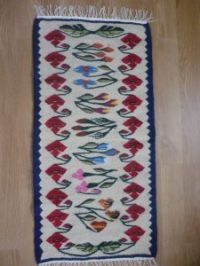
Wall-carpet (scoarta)- loom weaving technique
The traditional wall-carpet (scoarta) craftsmanship in Romania and the Republic of Moldova is Inscribes by UNESCO on the Representative List of the Intangible Cultural Heritage of Humanity, in 2016.
In Romania, carpet weaving dates from times immemorial. Carpets were utilitarian and decorative wool weavings, meant to protect and improve the quality of life in households. The name "scoarta" has Latin origin, reminiscent of their primary function, similar to the spruce bark (In Romanian bark means scoarta) used in the past to isolate the houses with beams.
These days, wall carpets are mainly appreciated as works of art for public and private spaces and exhibited at city festivals and ceremonies.
As can be seen in the video below, to make a carpet first it is necessary that the wool to be washed, dried, twisted, painted and tight in a loom.
Carpet weaving is done in the horizontal or vertical loom through the intertwining of wool yarns. The operations for weaving preparation are manual sorting and processing of wool fibers, followed by embroidery and yarning - this are the operations that underlie the future fabric.
Some areas still use natural paints for painting the wool fibers, obtained from different plants, flowers or insects.
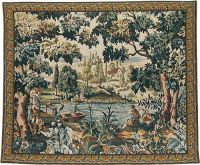
WEB of Europe tapestry: Maria Almanza is weaving her piece
The video
shows the technique used to create a piece of typical Belgian tapestry.
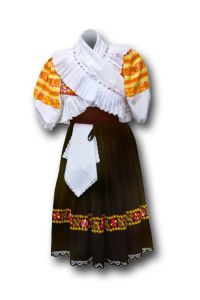
Women Folk Costume
Women Folk Costume
The origin goes back to 15.-16. Century. Currently they are still weared in some villages in the central part of Slovakia, e.g. Detva. Often on folk festivals, too.
The material used are “spodna”, it is a lower part of a garb, “oplecko” - for younger women it is typically by huge embroidered ornaments and for the older one is typical embroidery with the linen unshaven threads. Apron called "zástera" is a daily used, not decorated skirt. It is made from a blue percale and often weared into church. The dress is surrounded by a lace. Another part of this folk costume is skirt- the original was made with a very simply embroidery, on the waist they were densely stacked, now the skirt is more colorful. Bonnet called “cepiec” - it is a sort of cap, used by married women. “Brusliak” - covers the chest. It was only an embroidery in the past, then they used some beads on it.
“Krodel”- it is a big scarf, which goes under the armpit to the women back
